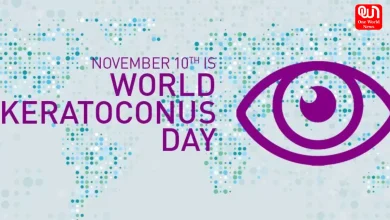The Middle Class Phenomena

The Middle Class Phenomena
Hussain, a six year old boy, was walking in the neighbourhood of Rama Krishna Puram with his father. Suddenly, he asks, “Father, how come these people live in pucca houses and we don’t”. The father replies nonchalantly, “Son, we also will get to live in a house when we climb up the ladder of income. When we become the ‘Indian middle class’.” The aspiration of Hussain to live in a pucca house is a story in itself. Many like Hussain are trying to climb up the ladder of income to get into what is called the ‘Great Indian Middle Class’.

Prof. Ravinder Kaur
McKinsey and Company has estimated that India will have a middle class comprising of more than 600 million people by 2030. To put things in a perspective, it is more than the combined population of Brazil, Pakistan, Russia and Japan put together.
The Indian middle class is an ‘extremely heterogeneous’group which forces us to think about the entire middle class rather than to treat it as a single entity. Recent trends has emphasized the importance of taking people’s ‘self-identification’ seriously as it reflects their imagination of who they are and where they want to go.
Prof. Ravinder Kaur, Indian Institute of Technology, Delhi, gave a lecture about the emergence of middle class and how it affects sex selection and family strategies.

Malvika Kasturi chaired the lecture
She said the occupation of middle class ranges across the gamut of industries. Employees in call centres, shops, courier delivery, drivers, personal attendant etcetera are some of the major examples. Middle class cuts across caste and community identity. According to many sociologists many more people are beginning to identify themselves as middle class.
In her field work in Madurai ranging over a decade she discovered that in earlier period people rarely identified themselves as middle class but in the lately, even the relatively poor people identified themselves as part of an income group which was higher than the poor class i.e. middle class.
“The journey of a person to be a middle class begins with the aspiration of becoming a middle class. Images and ideas of being middle class are derived not only from reference groups but also from those above the economic ladder.” The widespread influence of media cannot be discounted in bringing fantasies in middle class lifestyle. This middle class is hungry for a dramatic change in various fields which affects it. They are desirous of not being identified as poor anymore. This middle class also is very insecure and that gives rise to the concept of becoming secure financially as well as socially.

The chair and the speaker
Purchasing a car is a very significant symbol in middle class. The cars are taken out ceremonially and not for regular transport. It serves as a symbolic virtue of wealth. Consumption and assets have increasingly been more fruitful way of ascertaining class status. Consumption is a new side of performing middle class identity. In 2011 census, 2800 additional areas were identified as urban. Migration has always been a special feature of upward mobility.
The middle class values being emulated and perpetuated favour men over women, boys over girls. It has entrenched patriarchy. Gender defects of mobility strategy might be crucially negative for women. It results in practices like sex selection which affects the sex ratio, intra household discrimination ensuring female dependency rather than independency. It narrows women’s prospective rather than broadening it. The sex selection in the middle class is rampant. In families with 3 children, it is strictly preferred that one child at least be a son. In families with only child the preference is one son. Two sons and no daughter is a highly preferred choice. Such family strategies have lead to acute sex ratios.
The rise of middle class aspirations has also lead to inter-caste marriages and elopement. This has led to all kinds of issues such as dishonour killings. Dowry, also, is a social issue, which needs to be paid attention. Dowry provides economic mobility to boy’s side and social mobility to girls. This, more often than not, leads to a high debt from girls side. All these points consolidate to be the middle class status. Apart for the social conservatism reflected in the family education, political and religious conservatism is also characteristic feature of this class.
Picture Credits: Neel Kamal Pandey, One World News.







